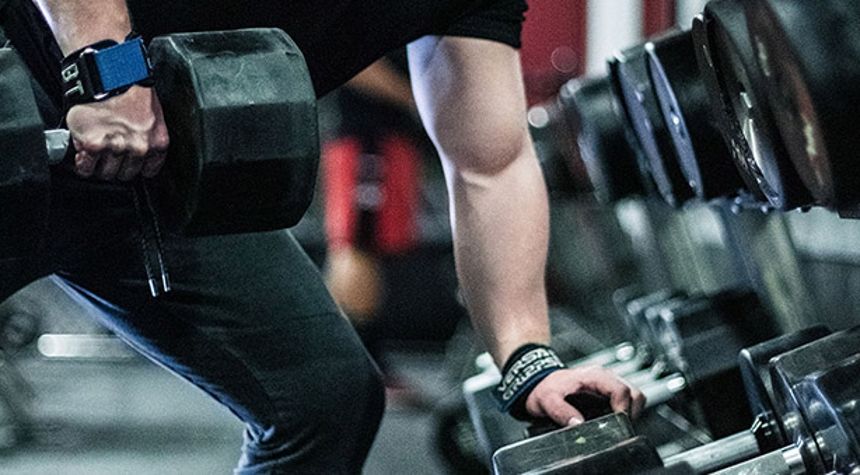How to Balance Volume, Intensity, and Frequency in Any Program
Ask ten lifters what the most important training variable is — volume, intensity, or frequency — and you’ll get ten different answers. But the truth is, these three pillars work together to drive muscle growth, strength, and recovery.
Get the balance right, and you’ll grow consistently. Get it wrong, and you’ll plateau, burn out, or spin your wheels for months.
This article breaks down how to balance training volume (total work), intensity (effort/load), and frequency (how often you train a muscle) — and how to fine-tune them for any program, from full-body beginner routines to advanced PHUL, PHAT, or PPL splits.
🧠 The Three Pillars Defined
Before you can balance them, you need to understand what each one truly means:
- Volume → The total amount of work you do (sets × reps × load).
- Intensity → How heavy or how close to failure you’re training.
- Frequency → How often you train each muscle group per week.
They form a triangle — increase one too much, and the others must adjust. For example:
- High volume + high intensity = overtraining risk.
- High frequency + high intensity = recovery failure.
- Moderate volume + smart frequency = sustainable progress.
💪 Why Balance Matters
Your muscles don’t grow from training — they grow from recovering from training.
Balancing these variables ensures:
- Enough stimulus for growth
- Adequate recovery between sessions
- Long-term sustainability and consistency
Every training program — from 3-day full body to 6-day PPL — is a unique way of organizing these three levers.
⚙️ Variable #1: Training Volume
Volume is the most reliable predictor of muscle growth — but only up to a point.
How Much Volume Do You Need?
Research suggests:
- Beginners: 10–12 hard sets per muscle per week
- Intermediates: 12–18 hard sets
- Advanced lifters: 16–22 hard sets (often cycled)
These aren’t arbitrary — they reflect the Maximum Recoverable Volume (MRV) concept: the most volume you can handle while still recovering.
Signs You Need More Volume
- No progress for 3+ weeks
- Not sore or pumped anymore
- Feeling under-stimulated after workouts
Signs You Need Less Volume
- Persistent soreness/fatigue
- Declining performance
- Trouble sleeping or loss of motivation
👉 Balance tip: Increase volume gradually (add 1–2 sets per week) and deload every 6–8 weeks.
🧱 Variable #2: Training Intensity
Intensity determines how challenging your sets are — either by load (% of 1RM) or proximity to failure (RPE or RIR).
Understanding Intensity Zones
- Strength focus: 80–90% 1RM (4–6 reps)
- Hypertrophy focus: 65–80% 1RM (6–12 reps)
- Endurance focus: 50–65% 1RM (12–20+ reps)
Using RPE (Rate of Perceived Exertion) or RIR (Reps in Reserve)
- RPE 6–7 / 3–4 RIR: Warm-ups or technique work
- RPE 8–9 / 1–2 RIR: Main hypertrophy sets
- RPE 10 / 0 RIR: Max effort (used sparingly)
👉 Balance tip: Train most of your sets at 1–2 RIR — close to failure, but not to complete exhaustion.
🔁 Variable #3: Training Frequency
Frequency is how often you train a muscle per week. It controls how you distribute your volume and recovery.
Optimal Frequency by Experience Level
- Beginners: 2–3x per week per muscle (Full Body, Upper/Lower)
- Intermediates: 2x per week per muscle (Upper/Lower, PPL)
- Advanced: 1–2x per week (Bro Split, PHUL/PHAT hybrids)
Why?
Because recovery capacity improves with training age, but so does workload. Advanced lifters can push more volume per session — so they may not need to hit the same muscle as often.
👉 Balance tip: Total weekly volume matters more than frequency, as long as it’s distributed effectively.
🧩 How the Variables Interact
Think of volume, intensity, and frequency like sliders on a mixing board.
| Goal | Volume | Intensity | Frequency |
| Strength | Low–Moderate | High | Moderate |
| Hypertrophy | Moderate–High | Moderate | Moderate–High |
| Endurance | High | Low | High |
| Recovery/Deload | Low | Low | Moderate |
You can’t max out all three — one must always give.
🧮 Practical Balancing Examples
Example 1: Beginner (Full Body 3x/Week)
- Volume: 10–12 sets per muscle per week
- Intensity: 60–75% 1RM (1–2 RIR)
- Frequency: 3x per week per muscle
✅ Focus: Technique, consistent overload, full recovery
Example 2: Intermediate (Upper/Lower 4x/Week)
- Volume: 12–16 sets per muscle per week
- Intensity: 65–80% 1RM
- Frequency: 2x per week per muscle
✅ Focus: Balance between workload and recovery
Example 3: Advanced (PPL 6x/Week)
- Volume: 16–22 sets per muscle per week
- Intensity: 70–85% 1RM
- Frequency: 2x per week for major muscles
✅ Focus: Managing fatigue, rotating heavy/light days
Example 4: Strength Phase (PHUL or Power Block)
- Volume: Moderate (10–14 sets)
- Intensity: 80–90% 1RM
- Frequency: 2x per week per lift
✅ Focus: Lower reps, higher load, strategic deloading
Example 5: Hypertrophy Block (PHAT or Bro Split)
- Volume: High (16–22 sets)
- Intensity: 65–75% 1RM
- Frequency: 1–2x per week per muscle
✅ Focus: Maximizing time under tension, pump work, and recovery
⚡ Periodization: The Secret Weapon
Balancing training variables doesn’t mean keeping them static — it means cycling them intelligently over time.
Linear Periodization
- Gradually increase intensity, decrease volume over time.
- Example: 4×10 → 4×8 → 5×5.
Undulating Periodization
- Alternate intensity and volume weekly.
- Example:
- Week 1: 10–12 reps (moderate load)
- Week 2: 6–8 reps (heavy load)
- Week 3: 8–10 reps (moderate load)
Block Periodization
- Divide training into distinct phases:
- Hypertrophy (volume) → Strength (intensity) → Power (speed) → Deload.
👉 Balance tip: Change one variable at a time — don’t overhaul your program every week.
🧠 The Art of Individualization
The perfect balance depends on you — your recovery, sleep, age, stress, and training age.
- If you’re constantly sore: Drop volume or intensity.
- If you’re not making progress: Add volume or bump up load.
- If you feel fresh but not growing: Increase effort (RPE) or frequency.
You should feel challenged but not wrecked.
📝 Putting It All Together
Here’s how to practically balance your program:
- Start with volume:
- Choose 10–15 hard sets per muscle per week.
- Set intensity:
- Train most sets 1–2 reps short of failure.
- Distribute frequency:
- Spread volume across 2+ sessions per muscle.
- Track performance:
- Record lifts, reps, and fatigue levels.
- Adjust monthly:
- Add sets or weight if progress stalls.
- Pull back volume or deload if fatigue builds.
📊 Example Balanced Training Templates
4-Day Upper/Lower Example:
- Volume: 14 sets per major muscle group
- Intensity: 65–80% 1RM
- Frequency: 2x/week per muscle
6-Day PPL Example:
- Volume: 18 sets per muscle
- Intensity: 70–85% 1RM
- Frequency: 2x/week per muscle
5-Day Bro Split Example:
- Volume: 20+ sets per target muscle
- Intensity: 65–75% 1RM
- Frequency: 1x/week
- Recovery emphasis: High sleep/nutrition focus
🔍 Final Thoughts
Balancing volume, intensity, and frequency is the foundation of intelligent training.
Too much of one variable can stall progress — but in harmony, they create the perfect growth environment.
✅ Beginners: Focus on consistent volume and form.
✅ Intermediates: Master double progression and balance recovery.
✅ Advanced lifters: Periodize intensity and volume across blocks.
Remember: What gets measured gets managed. Track, adjust, and evolve — that’s how you build muscle and strength for life.
🔗 Next Steps
- Read: [How to Choose the Right Workout Split for You]
- Read: [How to Progress on Any Training Split]
- Read: [The Science of Training Splits: What Research Says About Frequency & Growth]







